People living with HIV are living longer than ever. But with that longevity comes a growing problem: too many medications, and not enough awareness of how they clash. Antiretroviral therapy (ART) keeps the virus under control-but when mixed with common drugs like statins, antidepressants, or even over-the-counter painkillers, it can turn deadly. This isn’t theoretical. It’s happening in clinics right now. A 2022 study found that nearly four in ten HIV patients on ART are taking five or more other drugs. And one in three of those combinations carries a real risk of serious harm.
Why Some ART Drugs Are More Dangerous Than Others
Not all HIV medications play nice with other drugs. The biggest troublemakers are the protease inhibitors boosted by ritonavir or cobicistat. These aren’t just weak players-they’re powerful blockers of a liver enzyme called CYP3A4. That enzyme breaks down about 60% of all prescription drugs. When ritonavir shuts it down, other medications build up to toxic levels in your blood. Take simvastatin, a common cholesterol drug. When taken with ritonavir, its concentration spikes 20 to 30 times higher than normal. That’s not just a side effect-it’s a direct path to rhabdomyolysis, a condition where muscle tissue breaks down and can shut down your kidneys. The same goes for lovastatin. Both are absolutely off-limits with boosted PIs. On the other end of the spectrum are integrase inhibitors like dolutegravir and bictegravir. These are the quiet achievers. They barely touch CYP3A4. Dolutegravir has only eight major drug interactions documented. Compare that to ritonavir, which has over 200. That’s why most new HIV guidelines now recommend INSTIs as first-line treatment-not just because they’re effective, but because they’re safer to use alongside other meds.The Hidden Danger: Over-the-Counter and Herbal Products
Most people think drug interactions only happen with prescriptions. They’re wrong. Nearly 40% of dangerous interactions involve something you can buy without a prescription. St. John’s Wort, a popular herbal supplement for low mood, is one of the worst offenders. It speeds up the breakdown of efavirenz, cutting its levels by half. That means the virus can start growing again. Even worse, it can trigger resistance-making future treatment harder. Then there’s ibuprofen and naproxen. These seem harmless, but when paired with tenofovir (a common ART drug), they can pile up stress on your kidneys. For older patients already at risk for kidney issues, that’s a recipe for trouble. And don’t forget antacids. If you’re taking dolutegravir, avoid aluminum- or magnesium-based antacids like Maalox or Mylanta within two hours of your dose. They bind to the drug and stop it from being absorbed. Your HIV meds won’t work.Sexual Health and Erectile Dysfunction: A High-Risk Combo
Many men with HIV take medications for erectile dysfunction. But mixing these with boosted PIs can be life-threatening. Avanafil (Spedra/Stendra) is completely off-limits with ritonavir or cobicistat. The drug builds up so much in your system that it can cause dangerously low blood pressure, fainting, or even heart attack. Sildenafil (Viagra) isn’t banned-but you can’t take the normal dose. If you’re on a boosted PI, you’re limited to 25mg every 48 hours. That’s half the usual dose, and you must wait two full days between doses. Take more, and you risk sudden cardiovascular collapse. Tadalafil (Cialis) has its own rules. With ritonavir, you can only take 2.5mg once a day. Go higher, and you’re playing Russian roulette with your blood pressure.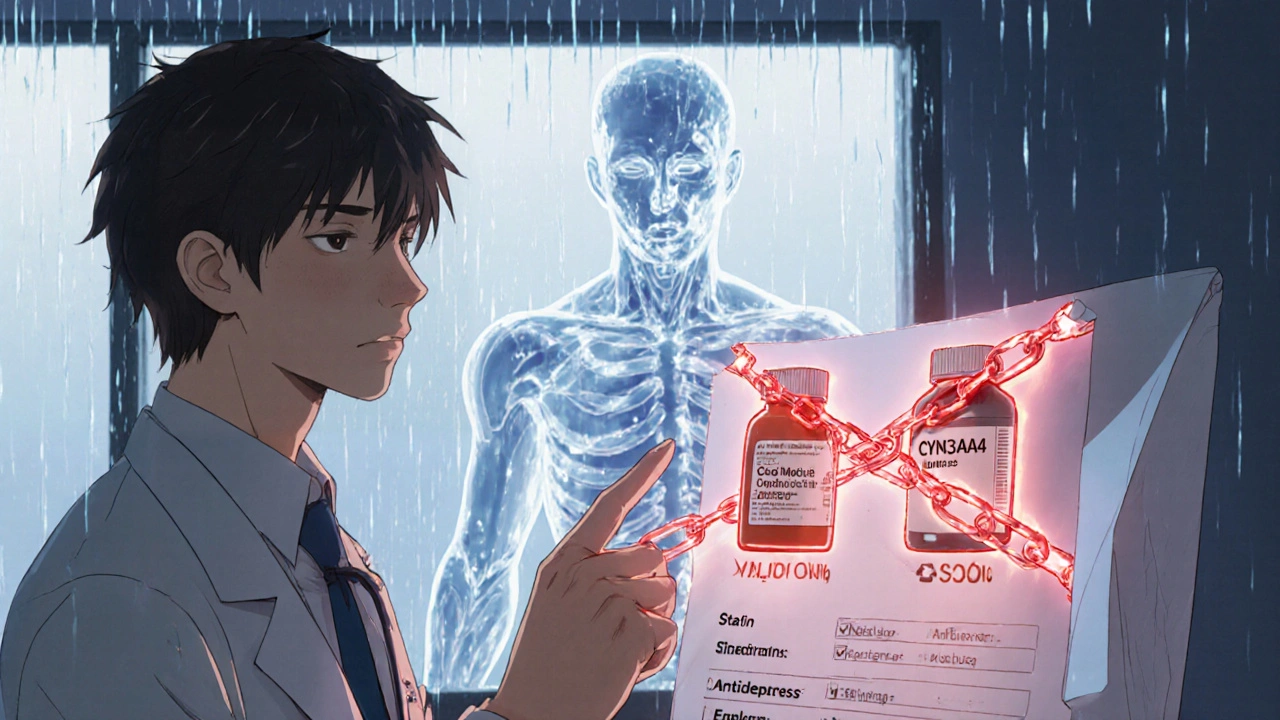
Psychiatric and Heart Medications: Silent Killers
Antidepressants are common in people with HIV. But combining SSRIs like fluoxetine with ritonavir can trigger serotonin syndrome-a rare but deadly condition where your brain gets flooded with serotonin. Symptoms? Agitation, rapid heartbeat, high fever, muscle rigidity, seizures. It can kill within hours. One documented case required stopping fluoxetine and reducing the dose by 50% just to stay safe. Heart medications are another minefield. Calcium channel blockers like amlodipine can rise 60% in concentration when taken with ritonavir. That means your blood pressure could crash. You might feel dizzy, faint, or even have a stroke. And then there’s the silent danger: inhaled steroids. Fluticasone (Flonase) and budesonide (Rhinocort) are used for asthma and allergies. But when combined with ritonavir, they can cause Cushing’s syndrome-weight gain, moon face, high blood sugar, and adrenal failure. One study found that 17% of patients on boosted PIs who used these sprays ended up in the hospital.What to Do: A Practical Action Plan
You don’t need to be a doctor to protect yourself. Here’s what works:- Keep a running list of every pill, patch, spray, supplement, and recreational drug you take. Include vitamins, herbal teas, and marijuana.
- Bring it to every appointment-even if you think it’s unimportant. Your provider needs to see everything.
- Use the Liverpool HIV Drug Interactions Checker. It’s free, updated monthly, and trusted by clinics worldwide. Type in your meds, and it tells you what’s safe, what’s risky, and what’s banned.
- Never stop or start a new drug without checking with your HIV provider first. Even something as simple as a new painkiller can be dangerous.
- Ask about alternatives. If you’re on a boosted PI and need a statin, ask for pitavastatin or fluvastatin. They’re safe. If you need an antidepressant, ask about sertraline instead of fluoxetine.
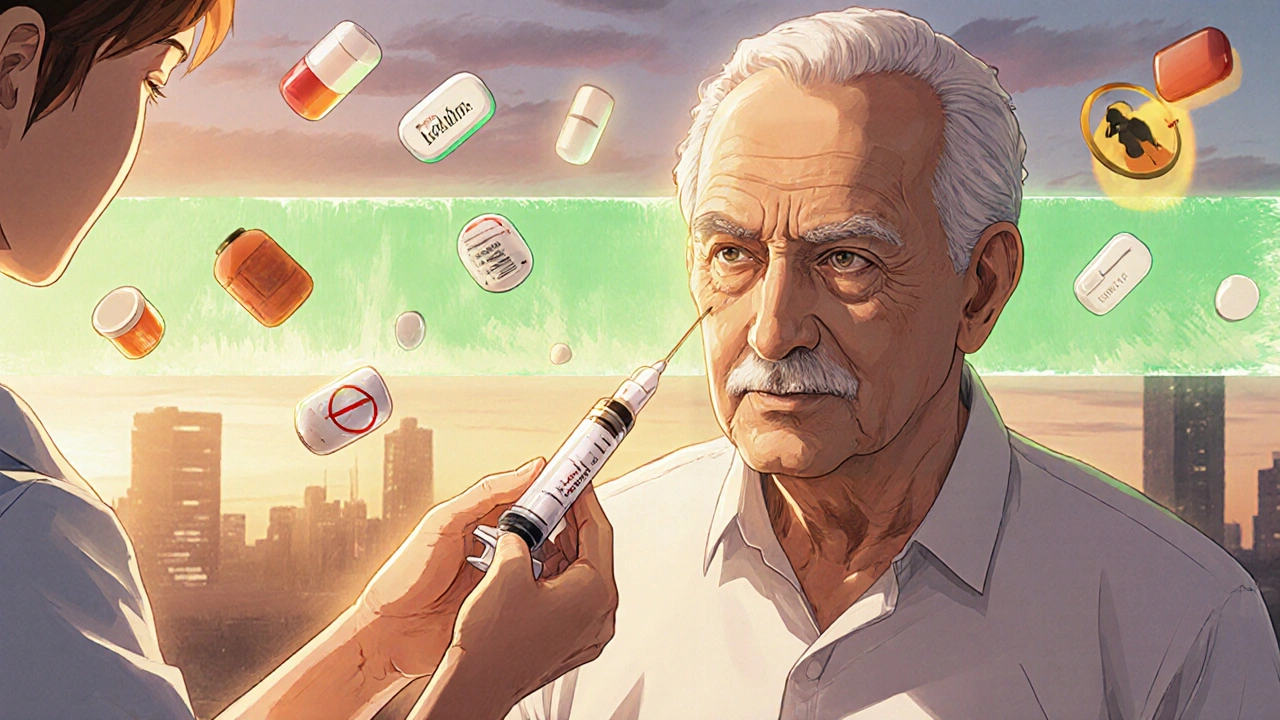
The Bigger Picture: Aging With HIV
More than half of people living with HIV in the U.S. are now over 50. That means they’re not just managing HIV-they’re managing diabetes, heart disease, arthritis, depression, and high cholesterol. Each condition brings more meds. Each med brings more risk. The numbers are stark: every extra medication increases your chance of a dangerous interaction by 18%. Every year since your HIV diagnosis? That adds another 7% risk. This isn’t just about HIV anymore. It’s about polypharmacy. It’s about aging. It’s about how our healthcare system still treats HIV as a standalone condition, when in reality, it’s part of a complex web of chronic illnesses.What’s Changing: The Future Is Safer
The good news? The tide is turning. New drugs like lenacapavir, injected twice a year, don’t rely on the liver to break down. That means fewer interactions. The next generation of HIV drugs is being designed to avoid CYP3A4 entirely. The HHS Guidelines updated in October 2023 now strongly recommend INSTI-based regimens for nearly all patients-not just because they work better, but because they’re simpler, safer, and easier to manage alongside other conditions. And clinics are finally catching on. The American Academy of HIV Medicine now requires its members to complete an 8-hour drug interaction course. Clinics that did saw a 42% drop in interaction-related hospitalizations.Final Warning: Don’t Assume It’s Safe
You might think, ‘My doctor knows what I’m taking.’ But doctors are human. They miss things. Especially when you’re on 10 different pills and the appointment is 10 minutes long. You are your own best advocate. If you’re on ART, assume every new medication-even a cough syrup or a sleep aid-could interact. Always check. Always ask. Always double-check. The stakes aren’t just about side effects. They’re about survival. A single wrong combination can end your life. But with the right knowledge, you can live long, healthy, and safe.Can I take ibuprofen with my HIV meds?
It depends. Ibuprofen is generally safe with most antiretrovirals, but it can stress your kidneys when combined with tenofovir-especially if you’re older or already have kidney issues. Use the lowest effective dose for the shortest time. Avoid long-term daily use. Always check with your provider before using it regularly.
Is it safe to use St. John’s Wort with HIV medication?
No. St. John’s Wort is extremely dangerous with HIV drugs like efavirenz, nevirapine, and some protease inhibitors. It can reduce their levels by up to 60%, leading to treatment failure and drug resistance. Avoid it completely. If you need help with depression, talk to your doctor about safer options like sertraline or citalopram.
Why can’t I take simvastatin with my ART?
Simvastatin is broken down by the same liver enzyme (CYP3A4) that ritonavir and cobicistat block. This causes simvastatin to build up to 20-30 times its normal level, which can cause rhabdomyolysis-a condition where muscle breaks down and can lead to kidney failure or death. It’s strictly contraindicated. Use pitavastatin or fluvastatin instead.
What should I do if I’m switching from a boosted PI to dolutegravir?
When switching off ritonavir or cobicistat, your body starts processing other drugs normally again. That means drugs like tacrolimus, cyclosporine, or certain anti-seizure meds can drop to dangerously low levels. Your doctor must reduce their doses-often by 75%-right after the switch. Never make this change without close medical supervision.
Are long-acting HIV injections safer for drug interactions?
They’re simpler in some ways-no daily pills-but they’re not interaction-free. Cabotegravir and rilpivirine injections stay in your body for months. If you take a drug that interacts with them, the effect can last up to a year after your last shot. Always disclose all medications you’re taking, even if you’re on injections. The interaction risk doesn’t disappear.
Can I drink alcohol while on antiretroviral therapy?
Moderate alcohol use is usually okay, but heavy drinking increases liver stress-especially if you’re on tenofovir or boosted PIs, which already affect the liver. Alcohol also raises your risk of missed doses and poor adherence. If you drink regularly, talk to your provider about liver monitoring. Avoid binge drinking.
What if I take recreational drugs like ketamine or cocaine?
Ritonavir slows down how your body breaks down drugs like ketamine, making their effects stronger and longer-lasting. This raises the risk of overdose, heart problems, or psychosis. Cocaine can increase blood pressure and heart rate, which is dangerous if you’re also on blood pressure meds that interact with ART. There’s no safe level of recreational drug use with ART-but if you use them, be honest with your provider. They can help you stay safer.
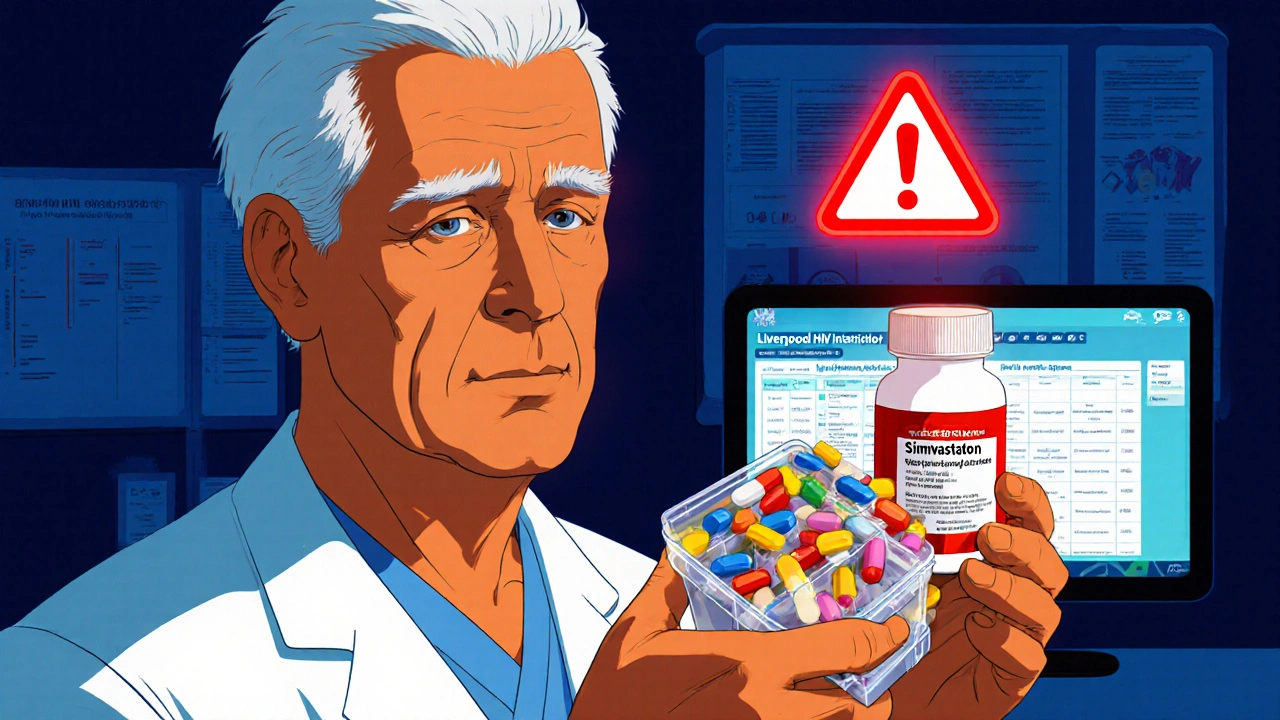
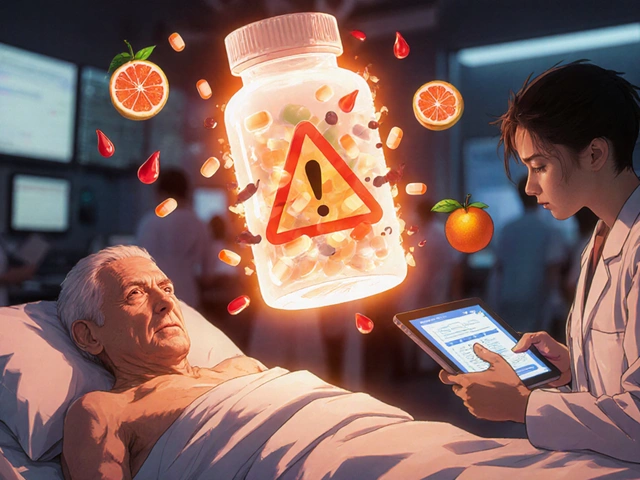
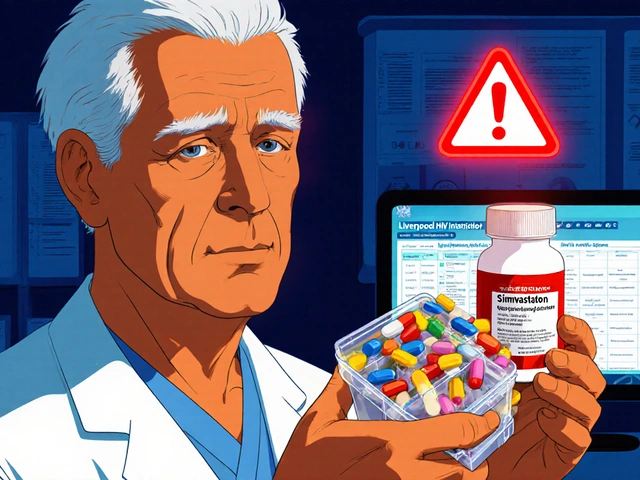


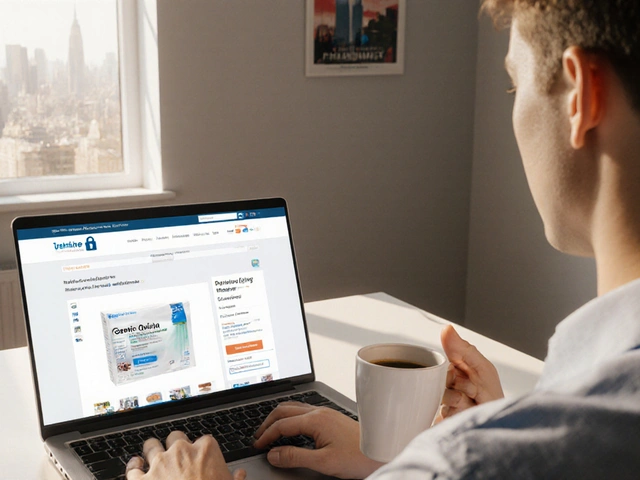


Write a comment
Your email address will be restricted to us